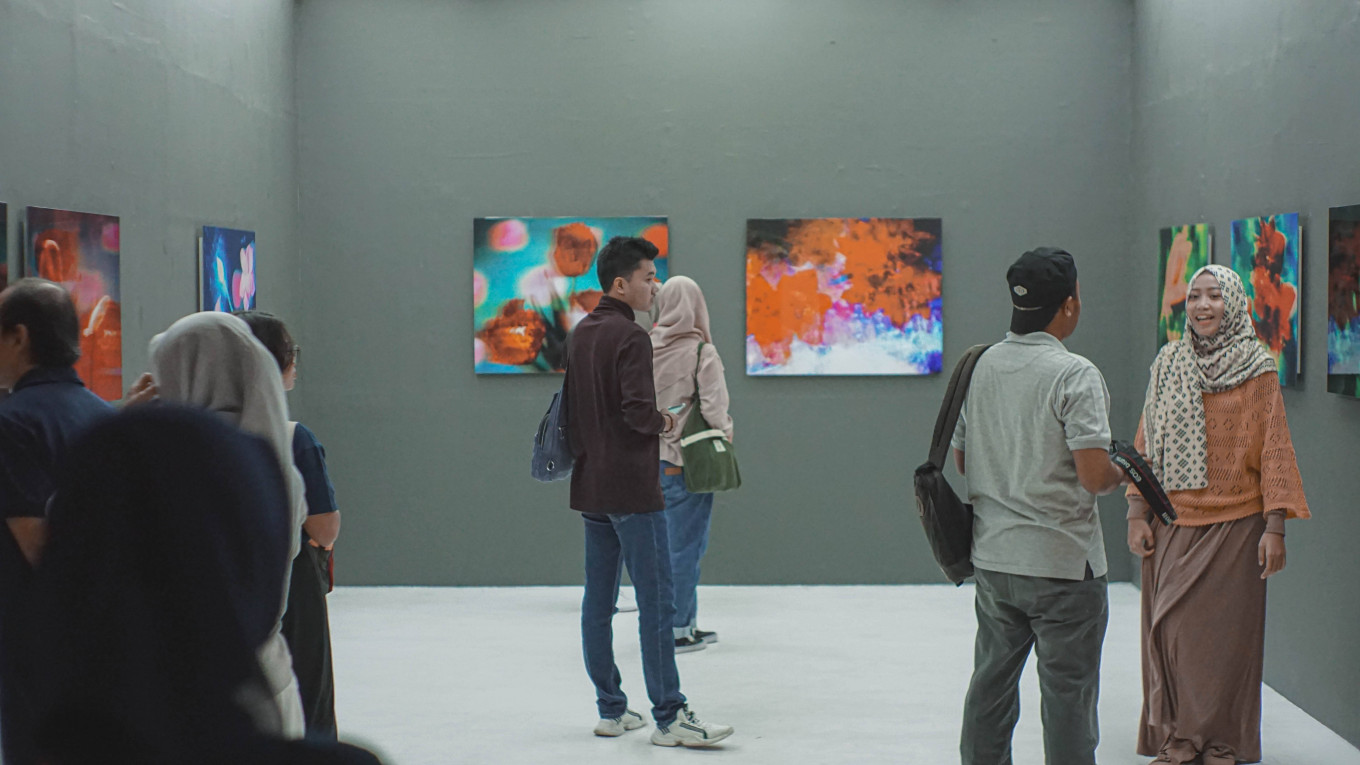Popular Reads
Top Results
Can't find what you're looking for?
View all search resultsPopular Reads
Top Results
Can't find what you're looking for?
View all search resultsArt as bridge of empathy: Lessons from cross-cultural collaborations
Through the transformative power of art, we can weave a tapestry of empathy, one brushstroke, one melody, one shared experience at a time, celebrating differences and paving the way for a brighter future for all.
Change text size
Gift Premium Articles
to Anyone
In today’s interconnected world, empathy seems to be increasingly scarce. Statistics paint a concerning picture.
In Indonesia, a 2023 study by Yogyakarta-based Gadjah Mada University revealed a growing intergroup prejudice, particularly among the youth. Similarly, a 2022 report from the United Kingdom's Runnymede Trust highlighted enduring ethnic inequalities stemming from a deficit of understanding and empathy.
The challenge is evident: Bridging the gap with those who appear different.
These consequences extend widely, fueling societal polarization, stifling meaningful dialogue, and obstructing our capacity to address complex global challenges that require collaborative solutions. Whether addressing climate change or economic disparity, a dearth of empathy can exacerbate existing problems and prevent us from working together for a better future.
So, where lies the solution? While technology offers connectivity, genuine empathy requires more than a digital connection. It demands active participation, open hearts, and a willingness to step outside our comfort zones. This is where the transformative power of cross-cultural collaboration comes in.
Engaging in collaborative artistic endeavors that transcend cultural and geographical barriers enables individuals to cultivate profound empathy, dismantle stereotypes, and build bridges of understanding, paving the way for a more compassionate, connected, peaceful, and prosperous world.
Throughout history, art has catalyzed empathy, fostering understanding across cultures and generations. Artists have utilized art as a platform to advocate for peace, resonating across geographical and temporal divides.
Similarly, Beethoven's symphonies craft a universal language of joy and sorrow, uniting hearts despite linguistic differences. These are just a couple of examples to underscore art's enduring capacity to forge visceral connections.
Today, the enduring legacy of fostering empathy thrives in collaborative art projects, where diverse voices and perspectives can intertwine. Take "The School of Hope" in Indonesia, which provides a platform for young individuals from various backgrounds to explore empathy through art creation, challenging stereotypes, and fostering connections through shared creativity. Similarly, "Care Krisis", a digital theatre collaboration between the UK and Indonesia, addressed the complex issue of aging populations, prompting global audiences to contemplate shared global challenges with empathetic eyes.
Nestled within the vibrant cultural landscape of Yogyakarta, "The School of Hope'' embarked on its transformative journey, bringing together youth from the deaf community, Islamic boarding school students, and other marginalized backgrounds.
This unique project, spearheaded by PSBK (Indonesia) and The Paper Birds (UK), and supported by the British Council’s Connections Through Culture grants, embraced art as a catalyst for exploring empathy, not just as an emotion but as a multifaceted concept with personal and societal implications.
Through a structured series of "5 lessons", the workshops skillfully blended cognitive, intuitive, and creative pathways. Interactive exercises like "empathy mapping" challenged participants to empathize with others’ perspectives, while collaborative art-making provided a safe space for self-expression and shared experiences.
One young deaf participant noted how the program not only enhanced their communication skills but also deepened their understanding of other people’s emotions, effectively breaking down barriers and building bridges of empathy across seemingly disparate backgrounds.
Testimonies from participants highlighted how art transcended language and cultural differences, fostering genuine connections and a shared sense of humanity among individuals who may have never interacted otherwise.
"Care Krisis" stands as a testament to the transformative potential of digital theatre in igniting global conversations on intricate issues. This innovative project brought together theatre companies Zoo Co (UK) and Sakatoya (Indonesia) to delve into the interconnected challenges of aging populations and their impact on both environmental sustainability and social care needs.
Live performances in each country, seamlessly intertwined with pre-recorded video backdrops, created a captivating hybrid experience. Actors grappled with these pressing issues, their diverse cultural perspectives enriching the narrative and sparking audience reflection.
One reviewer commented that "Care Krisis" transcended mere entertainment, prompting viewers to "consider the future we're building, not just for ourselves, but for generations to come." This digital collaboration illustrates how art transcends physical boundaries, nurturing empathy toward shared global challenges, and inspiring collective action through creative storytelling.
While the potential of cross-cultural art collaborations is undeniable, hurdles exist, including language barriers, navigating cultural sensitivities, and funding limitations. However, proactive planning, cultural awareness training, collaborative problem-solving, and the dedication of passionate individuals and organizations can overcome these challenges.
The fabric of humanity is beautifully intricate, woven from countless threads of diverse cultures and perspectives. Fostering empathy, understanding, and collaboration is crucial for building a just and compassionate world.
Let's champion cross-cultural art initiatives, bridging divides and sparking meaningful conversations. Through the transformative power of art, we can weave a tapestry of empathy, one brushstroke, one melody, one shared experience at a time, celebrating differences and paving the way for a brighter future for all.
The canvas is set, and the paints await. Join hands, share stories, and let art ignite the spark of empathy. Support collaborations, participate in workshops, and become an agent of understanding.
Together, we can paint a world where differences are embraced, not feared, and empathy guides us toward a future woven with compassion.
***
The writer is the country director for Indonesia and director Southeast Asia at British Council











